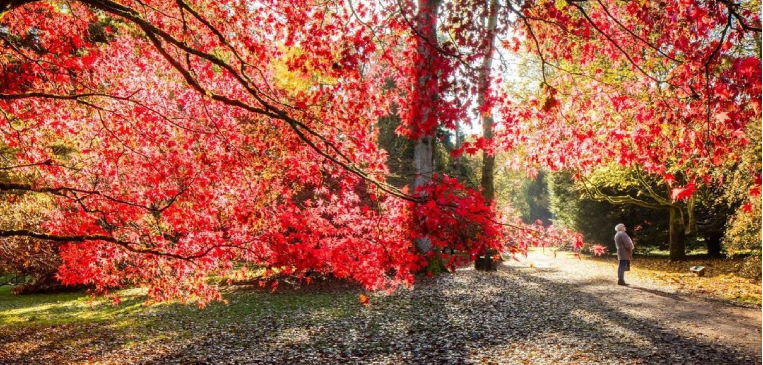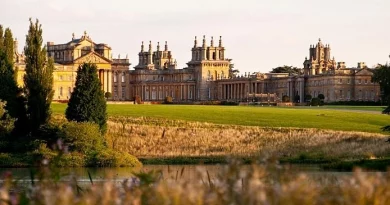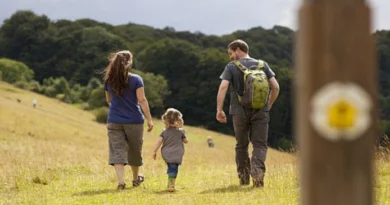The Seven Wonders of the Cotswolds
In 2012, a public vote was organised by the Cotswolds Conservation Board to find the Seven Wonders of the Cotswolds.
Members of the public submitted over 80 nominations, with suggestions for historic sites and buildings, natural attractions, villages, viewpoints, landscapes, and cultural features.
More than 500 votes were cast during a three-month voting period, and the final seven wonders of the Cotswolds Area of Outstanding Natural Beauty (AONB) were revealed.
Nicola Greaves, information and interpretation officer at the Cotswolds Conservation Board, described it as “a fascinating campaign which has captured the imagination of many people across the Cotswolds.”” She added, “The final list was a very interesting one, which represents some of the Cotswolds’ most distinctive features.”
The Cotswolds is England’s second largest protected landscape after the Lake District National Park. It covers 790 sq miles (2,038 sq km) and extends from Warwickshire and Worcestershire in the north through Gloucestershire and Oxfordshire to Bath and Wiltshire in the south.
The Seven Wonders of the Cotswolds are (in no particular order) as follows…
Westonbirt, The National Arboretum
Located three miles from the Cotswold market town of Tetbury, the historic, Victorian picturesque landscape and internationally important tree and shrub collection is managed by the Forestry Commission and supported by the Friends of Westonbirt Arboretum.
Managed by the Forestry Commission, the National Arboretum is home to some 16,000 trees from around the world, including Britain, China, North America, Japan, and Chile.
The 14,902 labelled trees (representing about 2,500 different types of trees) come from Britain, China, North America, Japan, Chile and other temperate climates.
Planting was started in the 1850s by Robert Holford, a rich Victorian landowner to whom the Westonbirt estate belonged.
With 17 miles of accessible paths and five national collections, Westonbirt enables children to become young adventurers while adults can connect with trees through guided walks, workshops, self-led trails or volunteering.
Westonbirt attracts over 350,000 visitors per year and is known worldwide for its spectacular autumn colour and the spring rhododendron, azalea and magnolia displays.
The arboretum is famous for groups, individuals and educational visits. Popular events include the Forest Live concerts programme, Treefest, and the Enchanted Christmas Illuminated Trail.
The Rollright Stones
The Rollright Stones are an ancient Neolithic and Bronze Age site on the Oxfordshire/Warwickshire border.
One of England’s most famous stone circles, the Rollright Stones are full of mysterious beauty and consist of three main elements: the Kings Men stone circle, the King Stone, and the Whispering Knights.
This ancient Neolithic stone circle is located near the north Cotswold village of Long Compton on the borders of Oxfordshire and Warwickshire.
The Rollright Stones, which span nearly 2,000 years of development, consist of three groups:
- The King’s Men stone circle
- The Whispering Knights burial chamber
- The single King Stone
Stories grew around the stones, telling of how they had once been a king and his knights turned to stone by a witch. Such stories continued to be taught amongst local people well into the 19th Century.
Meanwhile, antiquarians began to take an interest in the monuments. In the 20th Century, the stones became an essential site for adherents of various forms of contemporary paganism, with different ceremonies held at the site.
The Rollright Stones also began to appear more widely in popular culture, featuring in television, literature, music and art. The Rollright Stones have captured people’s imagination for centuries.
Cotswold limestone
The single most thing that gives the Cotswolds its distinctive character is the Jurassic oolitic limestone that lies beneath the land.
Limestone in all its various shades, used extensively in buildings, towns, villages, and dry-stone walls throughout the Cotswolds Area of Outstanding Natural Beauty (AONB), generates a feeling of unity between the natural and built environment.
Limestone, in all its various shades, is much prized as a building stone and is used extensively in buildings, towns, villages, and dry stone walls throughout the Cotswolds. It generates a feeling of unity between the natural and built environment.
Stone has been quarried in the Cotswolds for centuries for a variety of uses—everything from small farm buildings to magnificent wool churches. Its texture enabled stone masons to produce interesting and intricate architectural details such as mullions, gargoyles, and churchyard crosses.
The colour of Cotswold stone varies, from the honey colouring of the north and northeast of the region, through the golden stone of the central area down to the pearly white stone associated with Bath.
Woodchester Mansion and Park
Woodchester Mansion is a Grade I listed 19th Century Victorian Gothic mansion mysteriously abandoned mid-construction in 1873.
Hidden in a secluded Cotswold valley, it is untouched by time and the modern world.
The Grade 1 Listed building has been saved from dereliction but will never be completed. Visitors to Woodchester Mansion walk through an extraordinary architectural exhibit, the carvings among the finest of their kind in the world.
The mansion, home to two colonies of rare bats, has featured in several TV productions, including the 2006 BBC production of Dracula, where it was used as Dracula’s dilapidated castle. The drama starred Marc Warren in the title role and featured David Suchet. Various other TV appearances have helped turn Woodchester Mansion into a regular haunt for ghost hunters.
Cotswold Way National Trail
The Cotswold Way stretches 102 miles (164 km) along the escarpment between the beautiful market town of Chipping Campden in the north and the World Heritage city of Bath in the south.
The Cotswold Way National Trail, with its panoramic views, picturesque villages, and historic sites, attracts approximately 150,000 walkers every year.
The Cotswolds as a whole is renowned for its beautiful walks, providing walkers from all over the world with some wonderful places to enjoy their passion. Still, the Cotswold Way is, without doubt, the most famous and popular trail in the area.
Running for most of its length on the Cotswold escarpment, the Cotswold Way passes through many picturesque villages and is close to a significant number of historic sites, such as Sudeley Castle near Winchcombe, Hailes Abbey and many beautiful churches and historic houses.
The Cotswold Way has been promoted as a long-distance walk for over 30 years. Following many years of lobbying by the Ramblers Association and others, its special qualities have been recognised, and it was formally launched as a National Trail in May 2007.
Cleeve Hill and Common
At 1,083 feet (330 metres), Cleeve Hill and Common is the highest point of the Cotswolds and in the county of Gloucestershire.
The site, designated as a Site of Special Scientific Interest, lies at the top of the Cotswold scarp and is important for its extensive area of limestone grassland, as well as its many geological and landscape features.
The site is within the Cotswolds Area of Outstanding Natural Beauty (AONB) and it contains a wealth of archaeological interest, including three scheduled monuments.
Cleeve is Gloucestershire’s most extensive common, with an area of over 400 hectares (1,000 acres).
It is a haven for plants, insects, reptiles, birds and mammals that thrive on the agriculturally unimproved limestone grassland. This habitat has dwindled alarmingly in recent decades.
Cleeve Hill commands a clear view to the west over Cheltenham and the racecourse, over the River Severn and into Wales, and to the north over Winchcombe. It is a conspicuous outcrop on the edge of the limestone escarpment (sometimes called the Cotswold Edge) and the Cotswold Way footpath crosses it.
Stroud Farmers’ Market
The multi-award-winning Stroud Farmers’ Market was the first farmers’ market in Gloucestershire and has become one of the biggest and most popular in the UK.
After being voted the best farmers’ market in the UK in 2008, Stroud Farmers’ Market won the award again in 2013 and has appeared widely in the national media and on TV.
Run every Saturday in the town centre from 9 a.m. to 2 p.m., the market attracts hundreds of visitors who sample the mouth-watering range of organic and local produce on offer from across the area.
Wend Deane, a shopper and stallholder at Stroud Farmers Market, said: “It’s a colourful array of fresh and local products, sold by enthusiastic stallholders who are always more than happy to tell you about the grassroots of their products.
“The farmers’ market has its café with seating and various stalls selling delicious ready-to-eat foods. Therefore, it becomes a meeting place for a huge diversity of people.
“It’s obvious to see why the market has won so many awards – it is well managed and cared about by all who work within it and loved by the people who support it week after week.”




